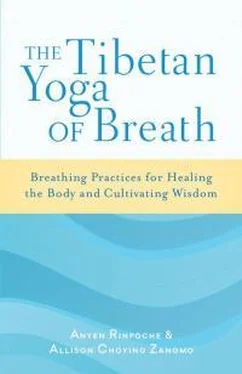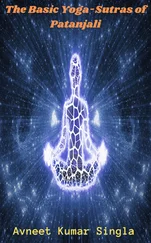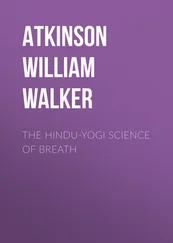But desire is not limited to the people we love. We can desire anything the mind is attached to. For example, we might gasp in amazement and awe when we see a beautiful mansion, an expensive and elegant automobile, incredible artwork, or gardens full of flowers. Attachment arises toward anything we find aesthetically pleasing, if we crave it or wish to possess it. The difficulty is not with the beautiful appearance itself. The difficulty is with the mind’s craving for more. A realized yogi sees the same beautiful appearances without that craving.
When we crave and chase after the forms and sensory experiences that the mind desires, we reinforce the habit of attachment. The more we reinforce the habit of desiring, the more we desire. Without mindfulness, which gives us the ability to break the cycle, we are sure to experience suffering based on these attachments. Ordinary attachment lacks the emotional understanding that our loved ones and the things we love are impermanent, and cannot be kept or maintained. Without this emotional certainty that all of life is impermanent, we are sure to suffer.
Exercise 13

BASIC MINDFULNESS TECHNIQUE
When we have mindfulness and introspection, it’s very easy to apply wind energy training to any scenario we can think of, whether it be pleasant, unpleasant, painful, or distracting. It does not matter if the situation is currently happening, or is something that appears in the mind as a memory or thought that we can’t seem to put down. Even during our sitting practice, the mind is barraged with memories of the past, sensations of the present, and thoughts of the future. Our thoughts and emotions are fueled by our wind energy—the “mount” that keeps the mind in perpetual motion—rather than being a direct result of outer circumstances. If this were not the case, the mind would be calmed simply by being in a quiet room with no distractions. Remember, the outer is a reflection of the inner.
We can use mindfulness at any time to help us calm the wind-mind, whether sitting on the cushion or walking about in our daily life. It can provide us with great emotional support if we cultivate it properly. To understand how mindfulness and wind energy training break the cycle of unhealthy emotional responses, let’s use the example of a thought or scenario that causes anger to rise up on the wind energy.
First, we actually see, or the mind suddenly remembers or imagines, something that upsets us. Suppose we have worked incredibly hard planning and cooking a special dinner for our beloved. As we begin to share it with them, they push aside the plate saying they do not really like what we’ve prepared and that they would rather order in. The moment that the mind “sees” the scenario unfold, we react with anger and disappointment. Unbelievable! We have worked so hard, and they don’t even appreciate all of the effort we made. Based on that reaction, we accumulate negative karma and strengthen the tendency for the mind to express anger.
However, if in the first moment that the mind sees our beloved not appreciating us, introspection causes us to think, “This makes me feel angry,” and then in the second moment, we remember to focus on the inhalation and exhalation of the breath, we avoid accumulating karma and strengthening that tendency of anger in the mind. The moment we remember to focus on the breath and elongate our inhalation and exhalation, our respiratory rate and the buildup of wind energy in the chest begins to decrease, as does the physical feeling of anger. Here too, wind interacts with how we feel. So, by working with mindfulness, we are actually preventing the accumulation of karma.
Mindfulness practice gives us the choice to take proper and wise action. After focusing on the breath and gaining mental and emotional space, we have new choices available to us. We are able to think clearly and make the best decisions about how to act and what to say, or to evaluate if an action is wise and appropriate in the particular circumstances. We lose the tendency of bouncing around from one thing to the next based on our impulses and reactions.
Working with wind energy training in conjunction with any emotional reaction makes us feel more relaxed. When we relax, our mental and emotional peace of mind grows. How does it feel to be able to let go of something instead of letting it run around and around through the mind, getting stronger and stronger? This feeling is the true result of practicing meditation and working with wind energy.
Exercise 14

SITTING ON THE CUSHION TO TRAIN IN MINDFULNESS AND WIND ENERGY
We are now aware of our dominant emotional tendency, and we understand how to apply mindfulness and introspection to any situation, whether we are acting in the moment or recalling past moments. When we sit down to work with mindfulness and wind energy as a formal practice, we need to focus on our most dominant emotional reaction first. What would that look like?
As taught in chapter 4, whenever we prepare to do wind energy training as a formal practice, we first do a short period of yoga practice, work with the posture, develop a compassionate motivation, and engage in the Nine-Cycle Breathing.
Next, we bring to mind the focus of our practice. We think, “As I am working with inhalation and exhalation of the breath, I’m going to abandon the strong habit I have toward emotional attachment (or whatever emotional tendency has been chosen). I am going to notice when I am tempted to chase after that feeling, and instead let it remain in its own place by focusing one-pointedly on the breath.” This focused motivation helps us develop another good quality: strength of mind and the determination to engage in meaningful spiritual practice.
Then we should begin focusing on the inhalation and exhalation of the breath for as long as we are able without distraction, making our breath even and elongated. We can return to this strong determination to avoid a particular habitual tendency repeatedly during our practice session. If we sit for any period of time, we will probably notice our primary emotional tendency showing its face in our thoughts and daydreams while we sit. Notice when the mind becomes overpowered by that tendency using introspection, and then remember the strong motivation to abandon the habit. After we again vow to cut through this habit, we should return to focusing one-pointedly on the breath.
Mindfulness and the Five Poisons
We can work with mindfulness and wind energy training in conjunction with any of the five poisons. Some of them we have already talked about: desire (emotional attachment); anger (dislike, resentment, or impatience); or a neutral reaction that is generally classified as ignorance. The other two poisons are pride and jealousy.
The pride that is considered a poison is not the pride that is similar to rejoicing, where we feel good about things. It is an arrogance, the feeling that others are less than us. A reaction based on pride is, for example, when we see somebody on the street and think, “I am more attractive than that person,” or “I am smarter or more knowledgeable than that person.”
Jealousy stems from the feeling that we have less than others have. We think, “Why don’t I have what that person has?” and “Why is their life so much easier than mine?”
No matter what emotion comes up, we can rely on mindfulness and a one-pointed focus on the breath to break the habitual cycle of energy that fuels that emotion. This basic technique is so simple, so beneficial, and so powerful, whether we are doing it as a sitting practice and reflecting back on certain situations or doing it in the moment.
Читать дальше













